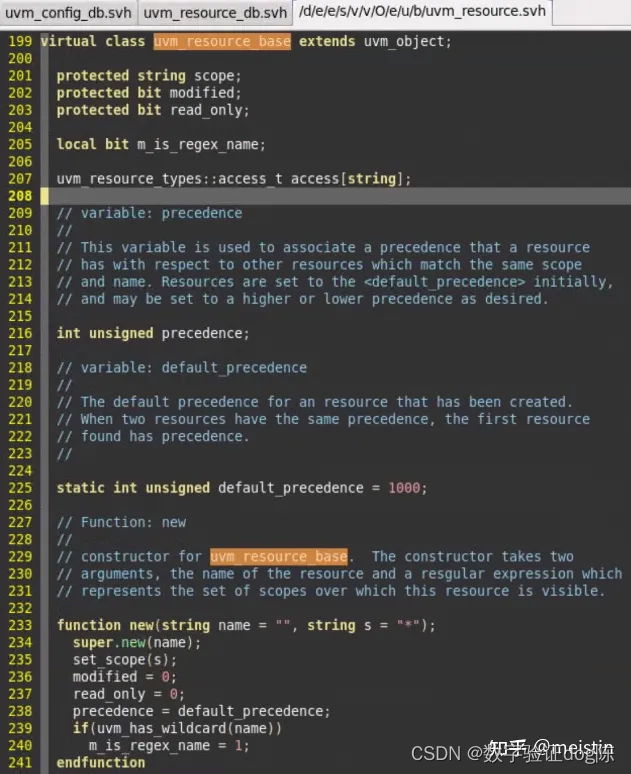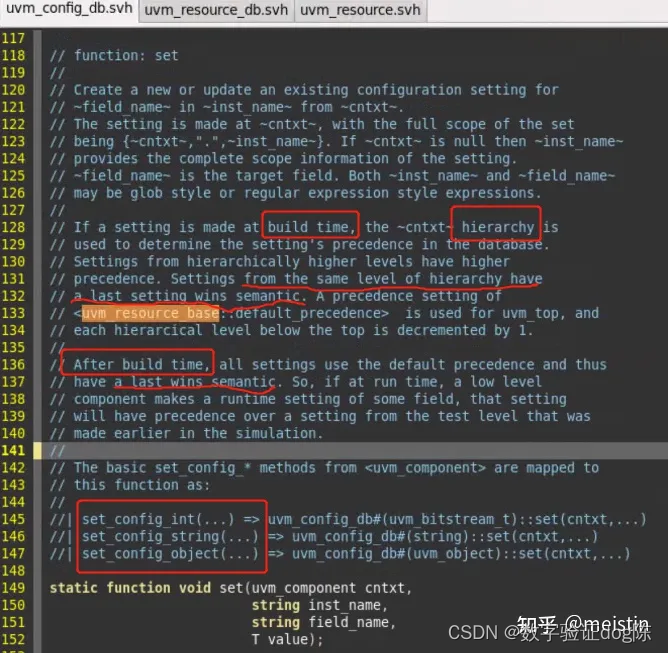[UVM源代码研究] 当我们调用uvm_config_db里的函数时uvm内部都是怎么工作的
我们已知的uvm_config_db有4个静态方法(所以调用方法是uvm_config_db::):
- set
- get
- exists
- wait_modified
今天我们就通过这四个method来一点点揭开uvm_config_db神秘的面纱。
首先我们最先有的疑惑就是,当我们调用set这个function的时候,我们所set的变量被存在了何处?

我们看到uvm_config_db是从uvm_resource_db继承而来的。

这个uvm_resource是个什么数据类型?

进一步挖下去看看uvm_resource_base是什么。

可以看到只是一个从uvm_object继承而来的virtual类而已,uvm_resource继承后增加了个参数化,而uvm_resource_db中定义(typedef)了一个跟其参数一致的参数化的uvm_resource类型rsrc_t。

后面用的一些函数的返回值或者中间数据都是rsrc_t类型的,本质上是uvm_resource类型。
现在我们回到最开始讨论的问题,set的数据究竟放在哪里了?那我们就需要看看uvm_config_db中关于set函数的定义。首先我们先来看看源代码中关于set这个函数的说明:

从这个函数描述中我
 UVM配置数据库(uvm_config_db)内部工作原理详解:set、get、exists与wait_modified
UVM配置数据库(uvm_config_db)内部工作原理详解:set、get、exists与wait_modified





 本文详细解析了UVM中uvm_config_db类的set、get、exists和wait_modified方法的工作机制,重点介绍了数据存储在uvm_resource_db的uvm_pool联合数组中的过程,以及优先级和覆盖规则。
本文详细解析了UVM中uvm_config_db类的set、get、exists和wait_modified方法的工作机制,重点介绍了数据存储在uvm_resource_db的uvm_pool联合数组中的过程,以及优先级和覆盖规则。
 最低0.47元/天 解锁文章
最低0.47元/天 解锁文章

















 1385
1385

 被折叠的 条评论
为什么被折叠?
被折叠的 条评论
为什么被折叠?








